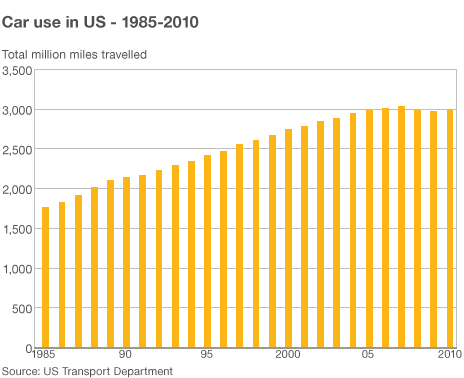– by Anita Elash
The Globe and Mail
Anyone who has been stuck in big-city gridlock lately may find this hard to believe, but millions of Westerners are giving up their cars. Experts say our love affair with the automobile is ending, and that could change much more than how we get around – it presents both an opportunity and an imperative to rethink how we build cities, how governments budget and even the contours of the political landscape.
The most detailed picture of the trend comes from the United States, where the distance driven by Americans per capita each year flatlined at the turn of the century and has been dropping for six years. By last spring, Americans were driving the same distance as they had in 1998.
The data are similar in Europe, Australia and Japan. And, although Canada doesn’t keep national statistics on individual driving habits, Australian researcher Jeff Kenworthy has found that driving in the nation’s five largest cities, combined, declined by 1.7 per cent per capita from 1995 to 2006.
If developed countries are reaching “peak car,” as some transportation experts are calling it, it’s not just a product of high unemployment or skyrocketing fuel prices, as the pattern began to show up years before the 2008 financial crisis.
Nor is it primarily a matter of people feeling guilted into reducing their car use for the sake of the climate and the environment – the threat of separating people from their wheels (or taxing their fuel use) has long been one of the green movement’s biggest stumbling blocks.
Indeed, the shift is so gradual and widespread that it’s clearly not a product of any “war on the car” or other ideological campaign. Rather, it’s a byproduct of a stage of development that cities were probably destined to reach ever since the dawn of the automobile age: Finding themselves caught in an uncomfortable tangle of urban sprawl, population growth and plain individual inconvenience, people, one by one, are just quietly opting out.
Continued at original site
 It doesn’t take a whole lot of imagination. Look at the American cities that are considered the most dynamic, exciting, and alluring, especially to the talented young professionals that every region seeks to attract. They all have been working hard to create alternatives to auto-based transport, to grow pedestrian friendly, human scale neighborhoods, and downtowns that offer something of a refuge from the traffic-choked aggravation that we’ve associated with city centers for generations now.
It doesn’t take a whole lot of imagination. Look at the American cities that are considered the most dynamic, exciting, and alluring, especially to the talented young professionals that every region seeks to attract. They all have been working hard to create alternatives to auto-based transport, to grow pedestrian friendly, human scale neighborhoods, and downtowns that offer something of a refuge from the traffic-choked aggravation that we’ve associated with city centers for generations now.

Comments